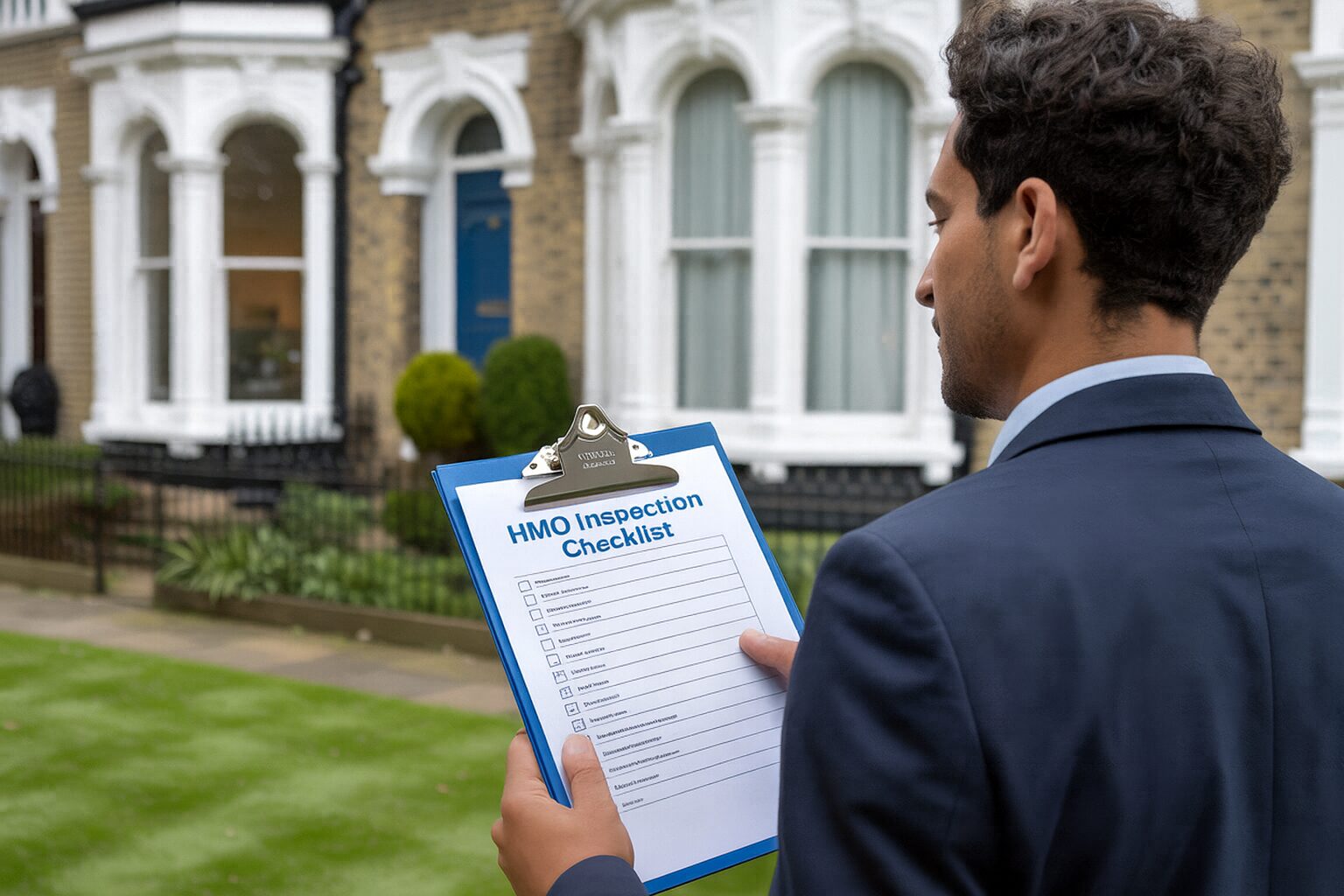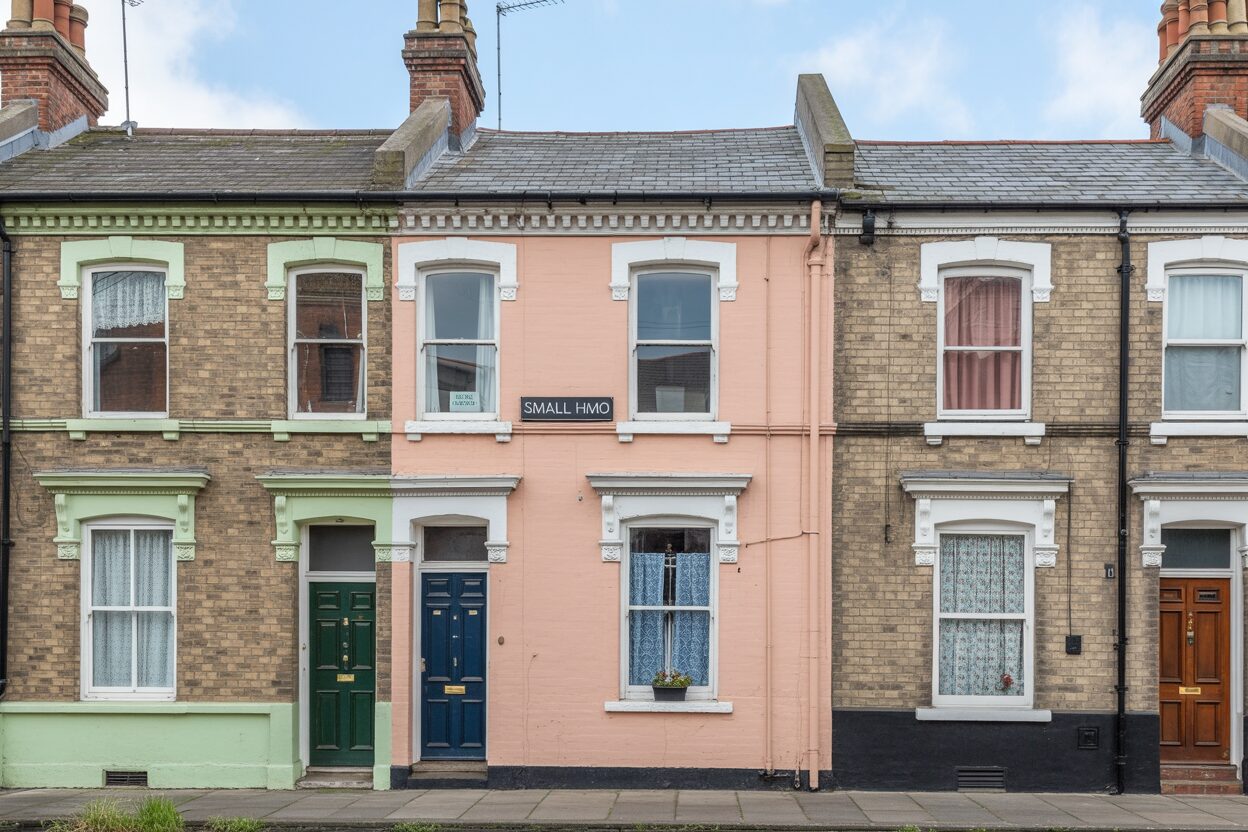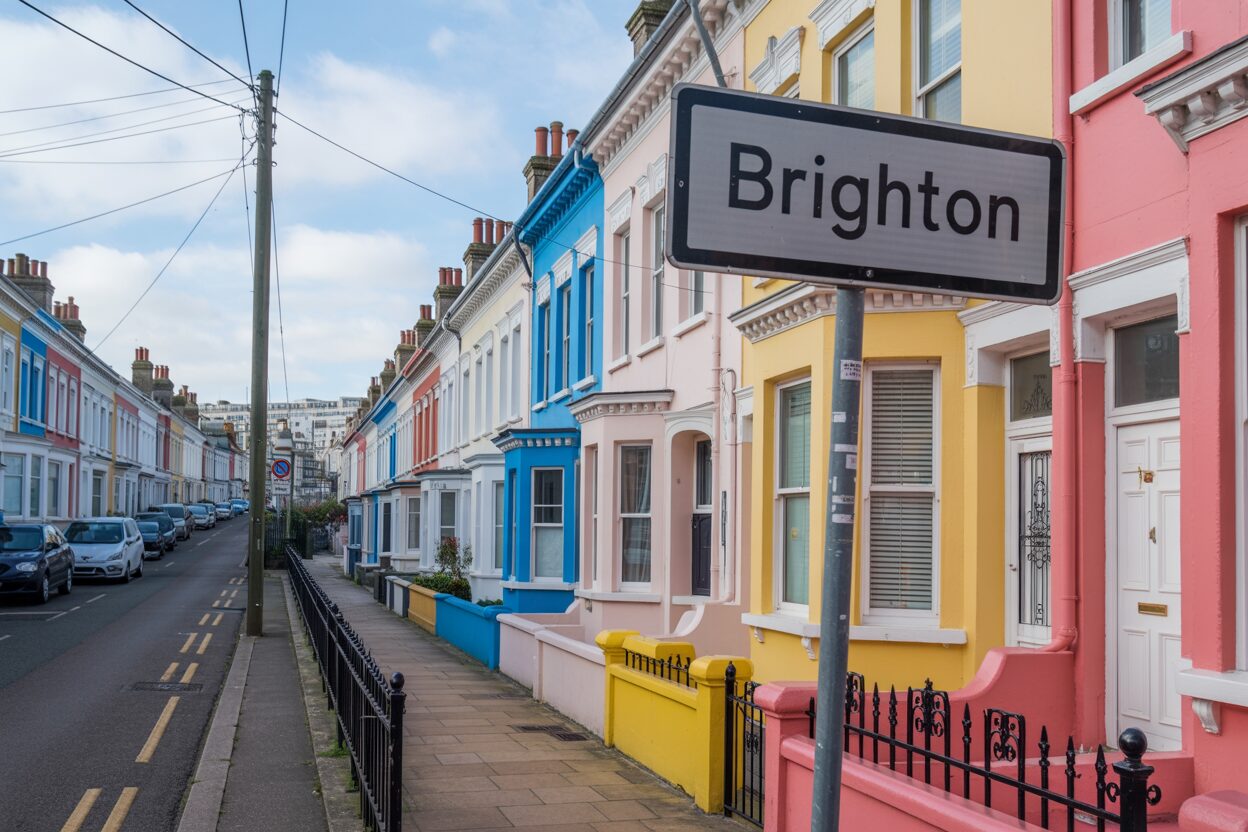
Councils inspect houses in multiple occupation (HMO) before they grant a licence and regularly thereafter. These routine inspections are the way local authorities satisfy themselves that your HMO property meets all its legal obligations, like fire safety regulations and energy performance standards.
In this article, we’ll share with you the most effective way to keep your property compliant so it passes local council inspection tests.
Who do councils run HMO inspections on?
Councils run HMO inspections on any HMOs within their jurisdiction. This is the case whether you hold a licence or not but the inspection regimes can be different.
For example, in Wyre Forest‘s guidance on HMOs, it states that all licensed properties will receive an inspection at least once in the five year licence period. For all other HMO properties, they book inspections following a complaint or on perceived risk levels.
For well-run HMOs that don’t need a licence, that may mean fewer visits if landlords run their property well. However, if it’s subject to multiple complaints, the council may inspect it at a much greater frequency.
Which HMOs need a licence?
Under current UK laws, all HMOs with five or more tenants from two or more households must have a mandatory licence to operate lawfully.
Councils have the power to introduce additional licensing in their jurisdiction. Depending on the scheme, they may require all HMOs to have a licence. When they introduce additional licensing, it’s normally within a restricted area where there is concern about poor housing standards or antisocial behaviour.
Under what powers can the council inspect my HMO?
The powers under which the council can inspect your HMO are contained in the Housing Health and Safety Rating System (HHSRS). This also gives them authority to inspect other types of rental property, including traditional buy-to-lets, house shares and holiday lets.
They must give you 24 hours’ notice in writing. They can apply for a magistrate’s warrant if you refuse entry. Councils also have the option for forcible entry under sections 239 and 240 of the Housing Act 2004.
Other powers they have include:
- Document requests under section 235. Failing to provide them is an offence under section 236.
- Improvement notices if they find Category 1 or Category 2 hazards which come into force 28 days after issuance
- (Emergency) prohibition orders that can ban or restrict use of a whole property, part of it or limit how many people can live there
- Emergency remedial action under section 40 where they can fix an issue with your property and send you the bill
The council can also issue a civil penalty notice of up to £30,000 or prosecute you, leading to an unlimited fine.
The HMO inspection checklist: 5 ways to get inspection-ready
When the inspector is due to arrive, it’s best to attend the inspection. As with all other business relationships, it’s best to build trust and show you’re taking things seriously. If you really can’t attend and employ a manager, make sure the same person deals with the council each time to keep the relationship consistent.
Most councils report that the inspection will take between 30 and 60 minutes. Our experience as HMO landlords backs this up. However, expect it to last longer in larger HMOs and if the inspector finds missing paperwork, safety concerns or signs that you’re not meeting all of the HMO regulations relevant to your layout, occupancy or licence type.
The five main areas of focus for an inspector are:
1. Fire safety
What the inspector looks for
- Clear escape routes with no bikes, boxes or coats getting in tenants’ ways
- Fire doors that close and latch properly where needed, like kitchens and rooms off escape routes
- Working alarm system suited to the layout of the property that meets safety requirements and that you test regularly
- Emergency lighting appropriate to your layout if escape routes are long, complex or don’t benefit from natural or outside light (best practice is following the LACORS/BS 5839-6 risk-based approach)
- One smoke alarm on every storey used as living accommodation
- CO alarm in any room that has a fixed combustion appliance like a boiler or wood burner (not needed for gas cookers)
- Fire extinguishers (not all councils require this so it’s worth checking your specific licence conditions)
- Final exit doors that are openable without a key
- Fire blanket in key areas like shared kitchens (if your council requires it)
What to do before the visit
- Walk the escape route to check it’s fully clear
- Test each fire door to see that it latches and seals and closers are intact
- Trigger the alarm and record the test
- Check emergency lights if you installed them
- Test alarms on move-in day for new tenancies and repair or replace faults promptly
- Monthly flick test and annual 3-hour test log for emergency lighting
What to have ready
- Show your weekly alarm test log and last 6-month service sheet
- Provide a fire-door check sheet (dates, rooms, defects fixed)
- Include a fire risk assessment (if you’ve done one)
- Proof that you checked every alarm on the day a new tenancy began
- Evidence of repairs or replacements to alarms when you learned of a fault
- Evidence of monthly flick test and annual 3-hour test log for emergency lighting
- Proof that any upholstered furniture you supply must comply with the Furniture & Furnishings (Fire) (Safety) Regulations 1988 (watch out for the amendment to this law from 30 Oct 2025)
Common fails
- Fire doors open that are wedged open
- Remove or damage closers and seals
- Dead alarm batteries
- Hallways and communal areas blocked by personal items
2. Gas, electrical and alarms
What the inspector looks for
- Valid gas safety certificate covering all gas appliances in the property that you’ve renewed in the last 12 months
- An Electrical Installation Condition Report (EICR) less than 5 years old [Related article: HMO Electrical Requirements & EICR Regulations Explained]
- No open C1 (“danger present: risk of injury), C2 (“potentially dangerous”) or FI (“further investigation”) items
What to do before the visit
- Give existing tenants a copy of the gas safety certificate within 28 days and to new tenants before they move in
- Provide the EICR to tenants within 28 days and the council within 7 days if requested
- Check expiry dates and schedule renewals
- Complete EICR remedials within the report’s timeframe and get written electrician sign-off
What to have ready
- Bring your CP12 (Gas), EICR, EPC or exemption, and alarm test log
- Supply tenants with proof you’ve resolved C1, C2 and FI items
- Evidence you gave tenants the gas safety certificate within 28 days / before move-in, and shared the EICR within 28 days (and supplied to the council within 7 days when asked)
Common fails
- Missing CO alarms
- Unresolved C1, C2 and FI items
- Vital certificates not renewed
3. Space, amenities and facilities
What the inspector looks for
- Your sleeping rooms meet minimum bedroom sizes: 6.51 m² (1 adult / single person), 10.22 m² (2 adults) and 4.64 m² (1 child under 10)
- Floor area under 1.5 m ceiling height is not part of your floor area calculation
- Provide enough kitchens, bathrooms and white goods for your headcount (check your council’s requirements)
- Working extractor fans, adequate fixed heating and openable windows
- No damp or mould
- Well-ventilated bathrooms and kitchens
What to do before the visit
- Measure any borderline rooms to check against the minimum size
- Check ventilation, fixed heating and that windows open
- Count kitchens, bathrooms, cookers and fridges and check they are sufficient in number to meet your council’s standard for amenities and licence rules [Related article: HMO House Rules: A Guide for Tenants & Landlords]
- Deal with any damp or mould issues
What to have ready
- Prepare a room schedule showing size and use
- List all facilities and compare them to your local council’s minimums
- Any work carried out on damp or mould, ventilation and heating to prove it’s been remedied (photos, invoices, dates)
Common fails
- Using a room that’s too small as a bedroom
- Not enough fridges, freezers or worktop space (very common in flat shares and conversion inspections)
4. Waste, refuse and outside areas
What the inspector looks for
- Compliance with refuse and waste conditions if your property is licensed (this is a mandatory condition of HMO licences)
- Enough bins for the number of tenants
- Overfilled or misused bins
- Clear access to the bin area
- Lack of pest activity
What to do before the visit
- Put out the right bins and labelled if needed to help tenants choose the right bin
- Clear any build up of waste and sweep clean external areas
What to have ready
- Show your inspector that you know the bin days and communicate them with tenants.
Common fails
- Overflowing or contaminated bins
- Bags left outside bins in communal areas or gardens
- Poor waste separation
5. Management and records
What the inspector looks for
- Display the landlord or manager’s name, address and phone number in a prominent shared area
- Produce documents on request
- Hold tenancy agreements in writing and be ready to show a sample written tenancy agreement if asked
What to do before the visit
- Organise all your documents in one HMO management folder (digital or paper)
- Make sure the landlord or manager’s name is still in a prominent position
What to include in your document pack
- Planning permission and Building Control sign-off if you’ve extended or altered the layout
- Show your selective licence if you’re in an a targeted area
- Asbestos position note for the common parts in pre-2000 buildings with shared halls/stairs
- Show your licence (or application), gas safety certificate, EICR, EPC, alarm logs, PAT log (if required), and contact notice
- Simple Legionella risk note
Common fails
- No manager contact display
- Poor organisation
HMO Architects note: One way to take control over inspections and the cost of HMO upkeep is a planned preventative maintenance program. This is a way of making small and ongoing improvements to keep your property in the best condition rather than waiting for problems to build up and solving them then.
HMO Architects: helping HMO landlords meet and exceed inspection requirements
Inspections are a cost of doing business as an HMO landlord. The hard part is getting ready for your first inspection. Once you’ve met one and they’ve taken you around the property showing them what they look for, follow-up inspections become progressively easier.
When working for clients, we build in easy-to-maintain compliance from the start. Here are three of our most recent success stories:
- Beaufort Ave, London (4 units): On a limited budget with no extensions, loft conversions or en-suite installations, we turned this three-bed home into a four-bed small HMO. We also upgraded the property to EPC C to future-proof the development against expected changes in the law in 2030. The value of the property rose from £550,000 to £900,000 and the rent quadrupled from £1,400pcm to £5,600.
- Flat 107, London (4 units): This client presented two challenges. First, preserve the historical nature of this maisonette above a print shop. Second, it’s in a conservation area. Our architects created a stunning four-bed HMO, each room with its own en-suite wet room, that proved very popular with renters in this fashionable part of the capital. Property value rose from £550,000 to £900,000 and the rent trebled from £1,600pcm to £4,800.
- South Bank Road, Liverpool (6 units): This back-to-brick regeneration featured rebuilt lfoors and roofing, rear and dormer extensions and bathroom facility upgrades to two en-suites and two shared bathrooms. The value of the property rose from £85,000 to £280,000 and the rent went up from £550pcm to £2,800.
Compliance, planning and licensing are a key part of HMO Architects’ services. We have worked with over 750 clients across 200+ councils, with a 97% inspection success rate.
Our range of specialist services includes:
- Investment strategy calls: Speak to our Investment Director who was 17 when he began building his own extensive property portfolio. Ryan Windsor has worked on over 2,200 projects for clients during his career.
- Feasibility study: Giovanni Patania, our Architect Director, will advice you on the pre-buy and design feasibility of a project you’re considering to let you know (x).
- Planning permission: We deal with your council on planning permission and other issues like licensing to get your application through. We have a success rate of 97% across 200 councils on projects worth over £100m.
- End-to-end service: Architectural design, planning approval services, building regs and interior design in one place.
- Wider network: Access experts ranging from specialist builders to property development finance brokers when you need them.
Check out our detailed HMO legal FAQ and find out more about the true cost of unlicensed HMOs on our website. Discover whether HMOs, buy to lets or stocks and shares deliver the best return.
View our range of development finance case studies to see how we’ve helped clients turn their ideas into sound investments. Read customer stories on HMO, flat, holiday let and housing projects.Call us on 01223 776 997 or email us directly.
Giovanni is a highly accomplished architect hailing from Siena, Italy. With an impressive career spanning multiple countries, he has gained extensive experience as a Lead Architect at Foster + Partners, where he worked on a number of iconic Apple stores, including the prestigious Champs-Élysées flagship Apple store in Paris. As the co-founder and principal architect of WindsorPatania Architects, Giovanni has leveraged his extensive experience to spearhead a range of innovative projects.




